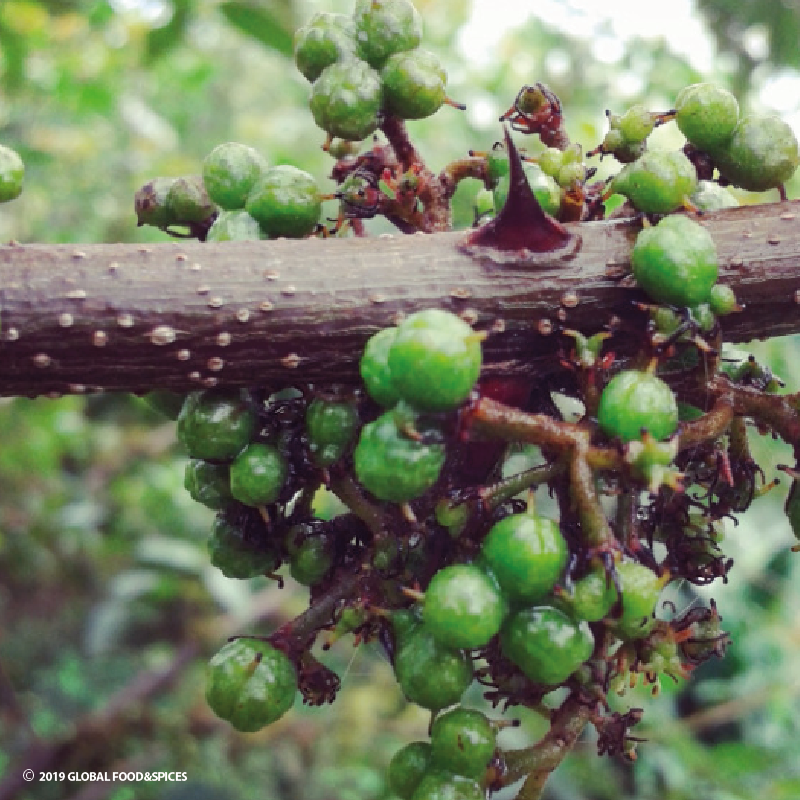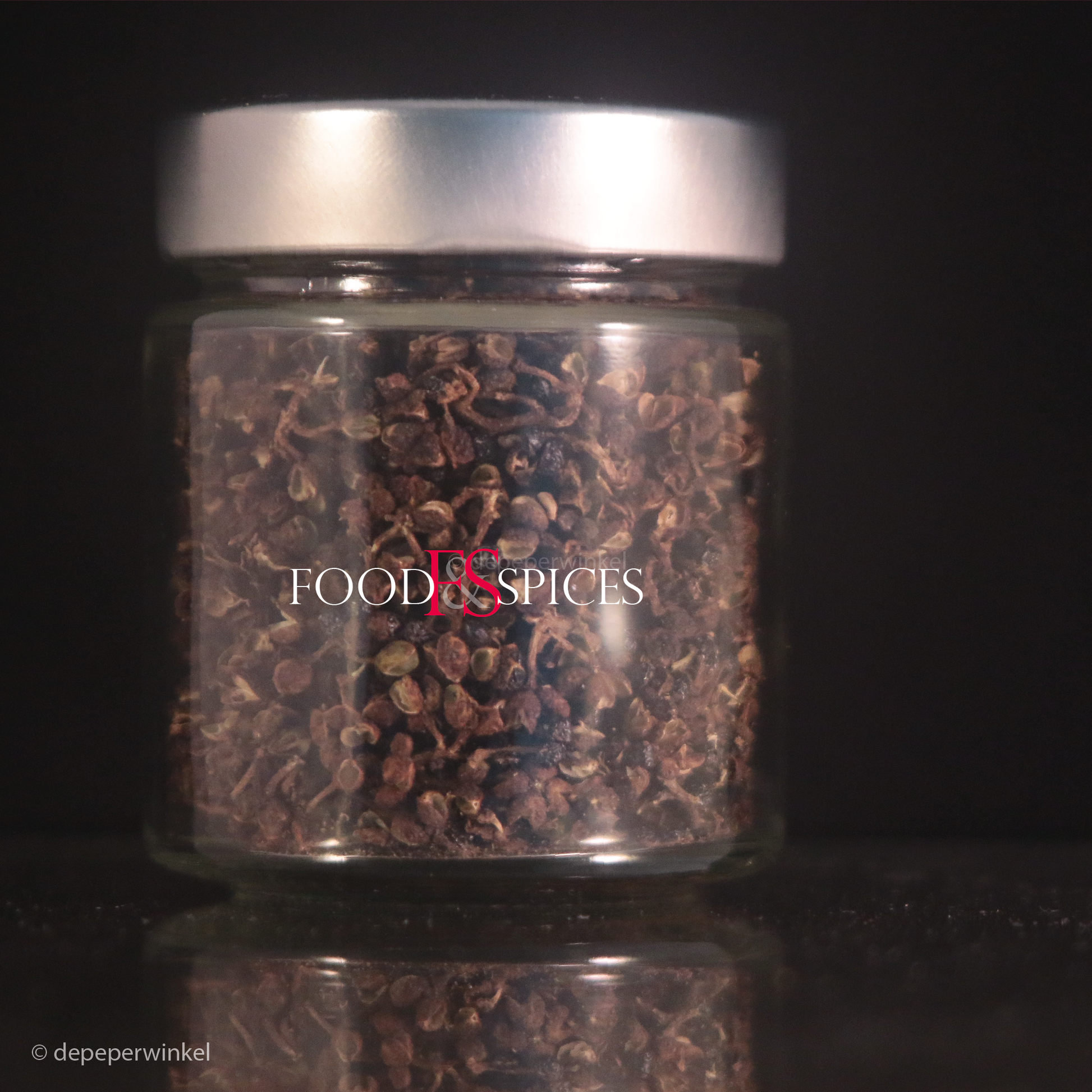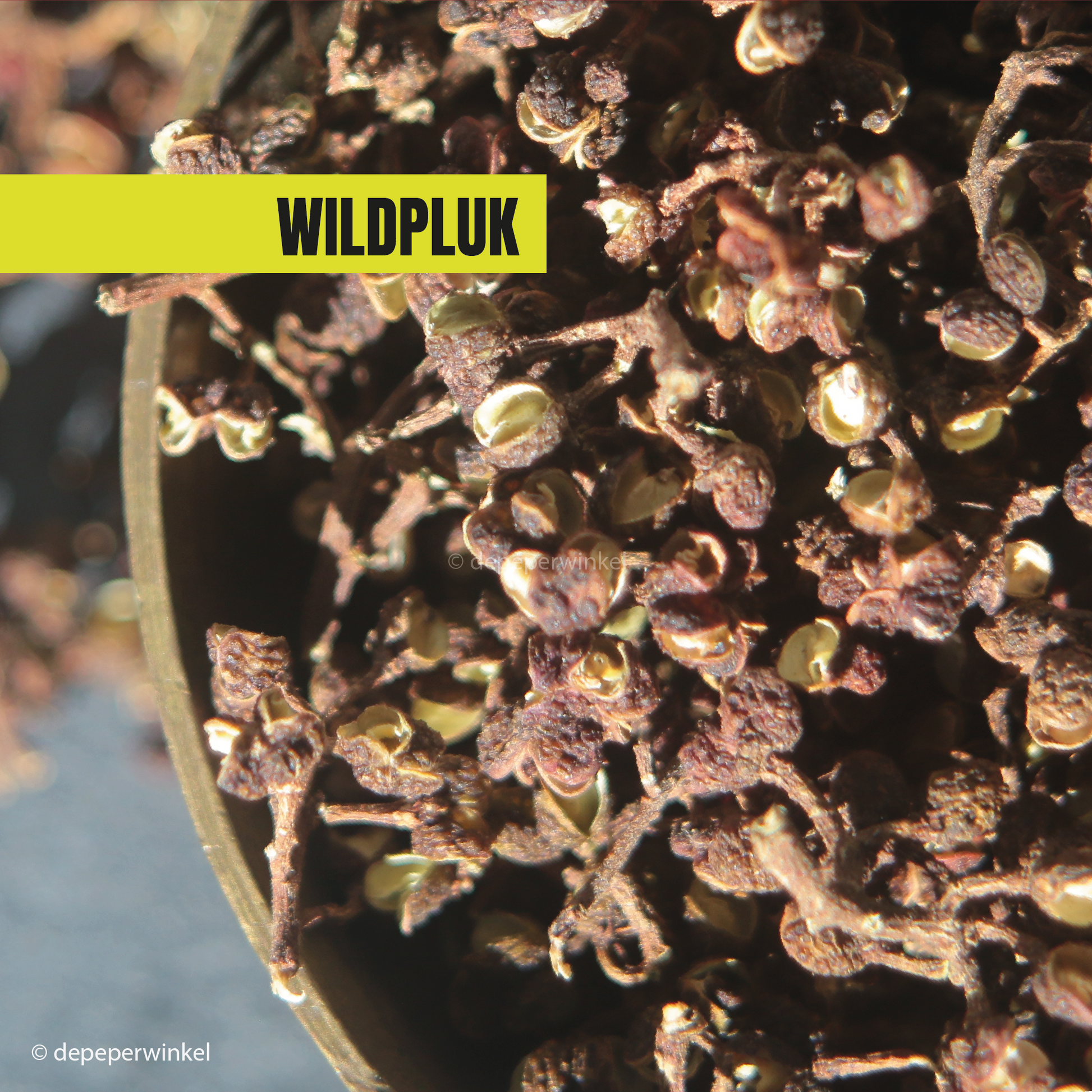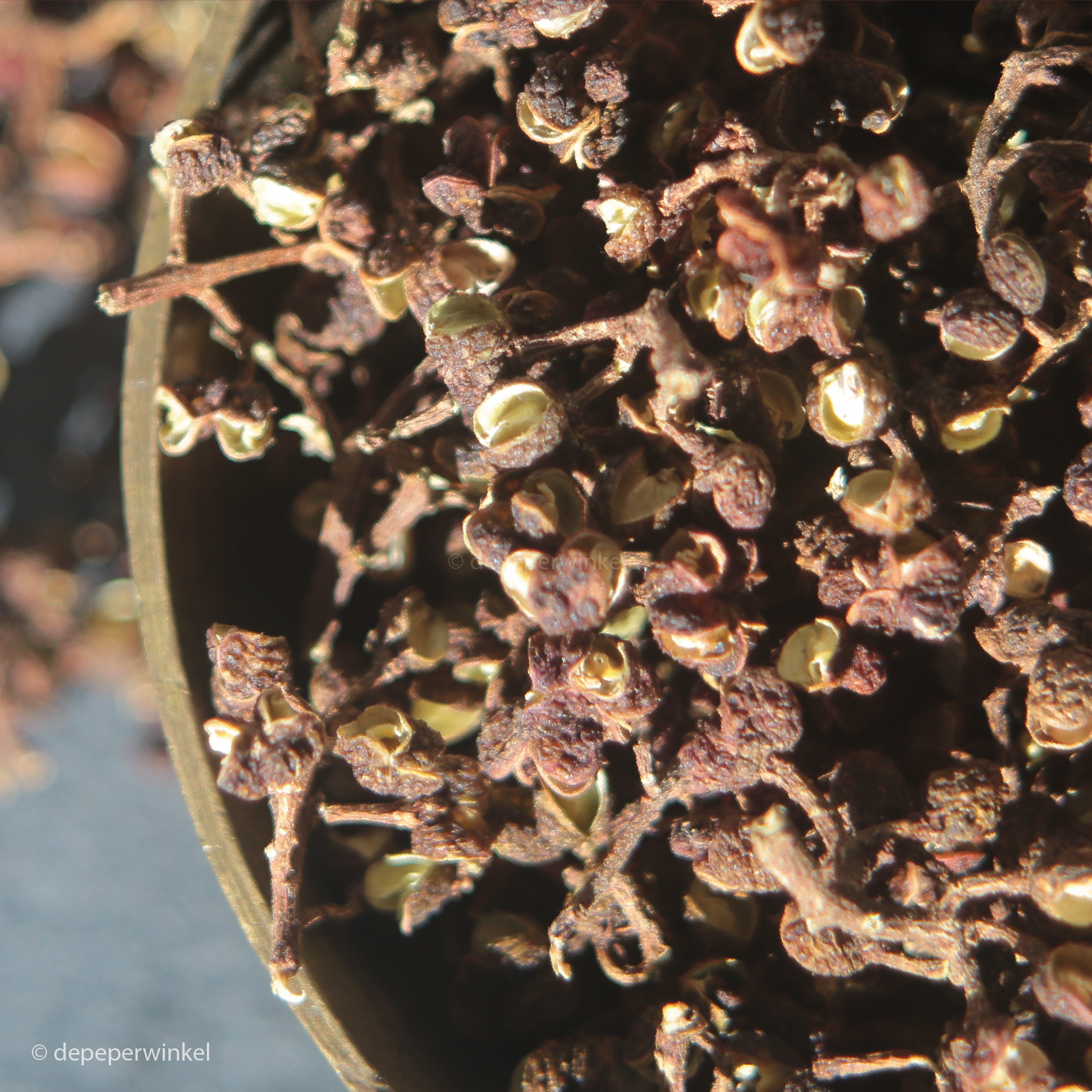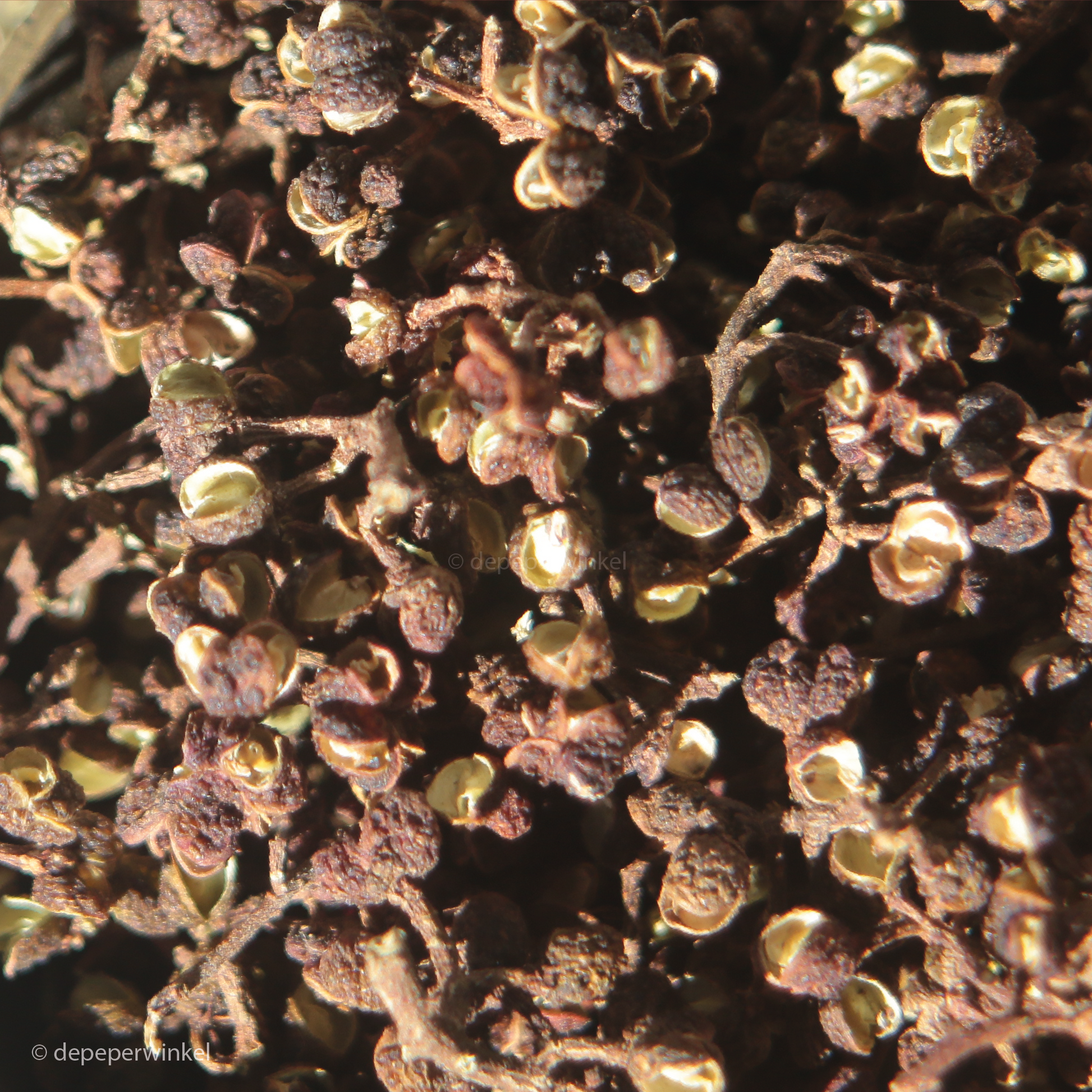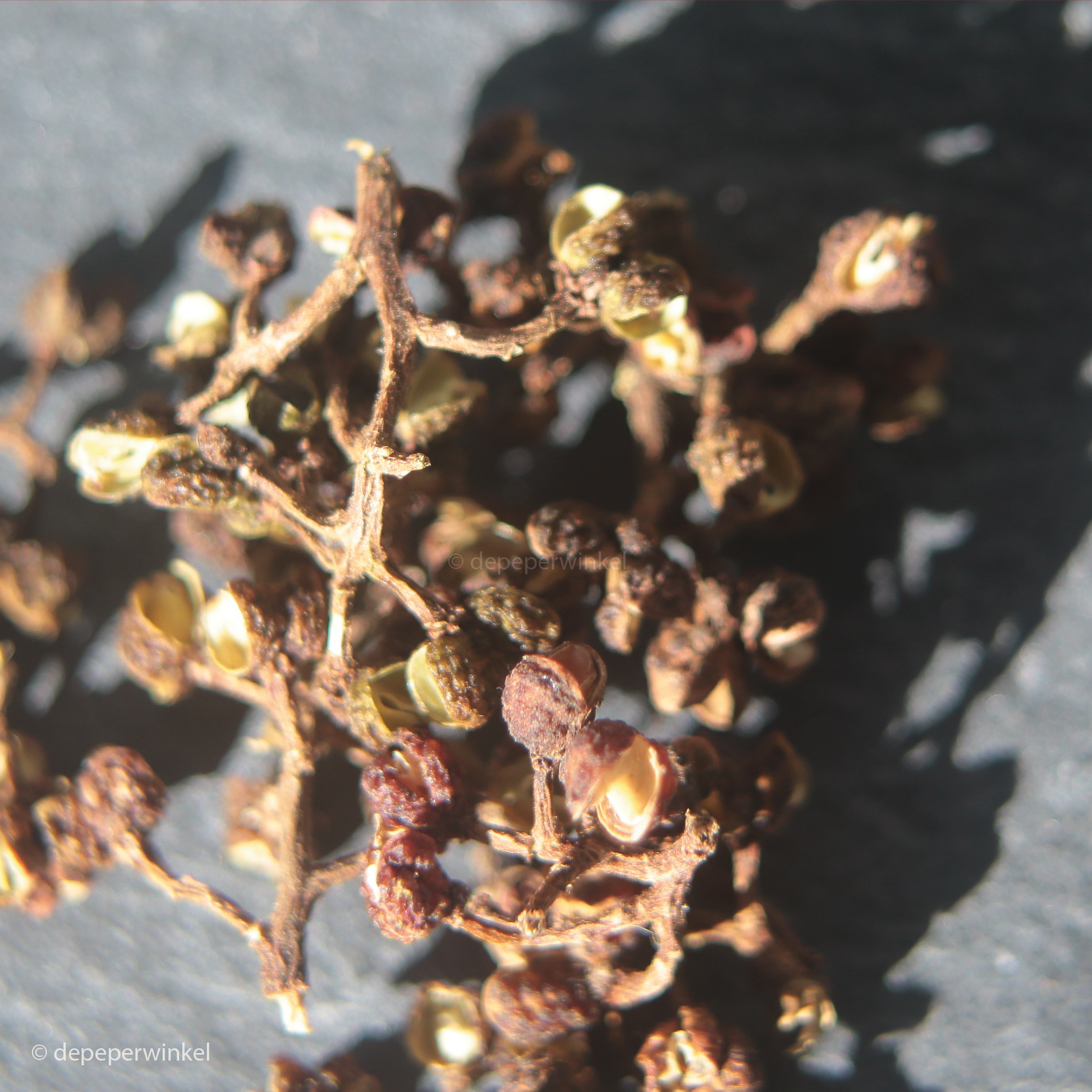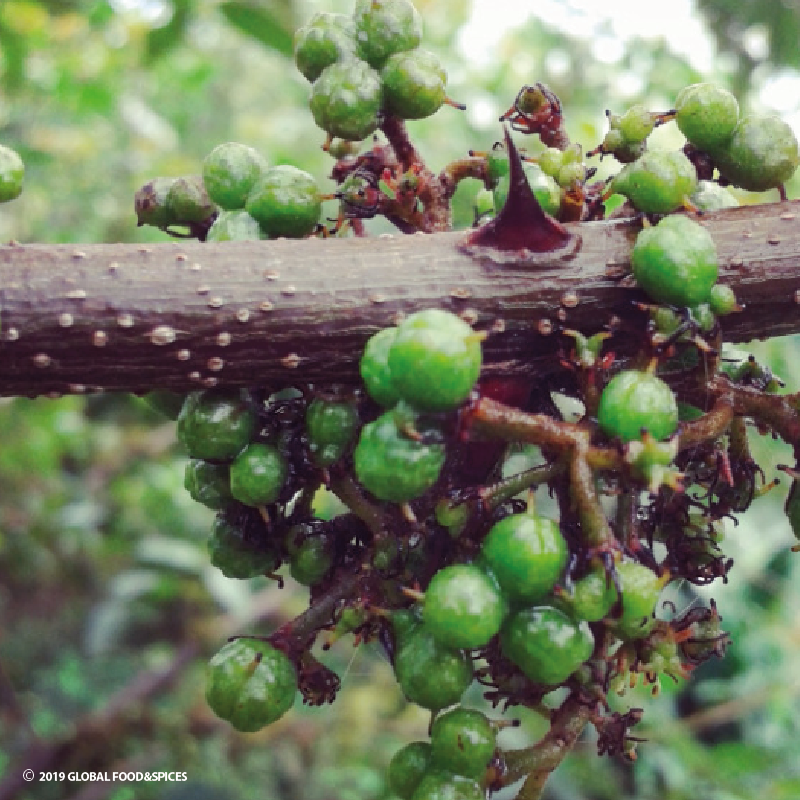depeperwinkel
Andaliman (premium Batak <tc>pepper</tc>)
Andaliman (premium Batak <tc>pepper</tc>)
In stock
Unable to load availability for pickup
This andaliman is unique because it's virtually seedless! We sell these aromatic, pungent berries as clusters, sourced from wild-growing andaliman shrubs. One of the few places in the world where Zanthoxylum acanthopodium—a thorny shrub or tree—grows is Sumatra.
In Sumatra, the
The berry derives its sharpness from sanshool, a substance that creates a pleasant, tingling sensation on the tip of your tongue. Andaliman is a citrus relative, hence its citrus aroma. It's similar to the citrus notes of Ma khaen.
Zanthoxylum acanthopodium grows wild in Sumatra and occasionally elsewhere in Southeast Asia, such as India, and is cultivated nowhere else in the world. The main areas of cultivation are around Lake Toba, North Tapaluni, and the island of Samosir. The berries are harvested year-round, with a peak season in March.
On average, one kilogram of dried andaliman requires eight kilograms of fresh berries. The andaliman is harvested in clusters and contains not only the berries, but also the small stems and many twigs. The berries usually contain seeds, as these don't fall off spontaneously.
Our andaliman is exceptional because almost all the seeds have been removed. It therefore contains few bitter notes, allowing the fresh citrus aroma to dominate! You'll undoubtedly get more for your money.
The unique sharpness experience of sanshol
Characteristic of all Zanthoxylum
The numbing effect is primarily due to γ sanshool and α hydroxy sanshool. The amount of α-hydroxy sanshool in the berries can be (well over) 50‰ of the dry weight, while γ sanshool accounts for around 5‰. The tingling sensation is accompanied by a mild numbness, jokingly compared to tasting a 9-volt battery. A single berry is enough to experience this! somatosensation, a tingling sensation caused by touch, has been used for centuries as an anesthetic in traditional Asian medicine. Its effects are very complex and the subject of extensive research. Hydroxy-α-sanshool, in particular, is said to cause the tingling sensation, and there are certain parallels with the pungency experienced with capsaicin, the pungent substance in chili
Smell and taste
The berries have a complex aroma, with notes of orange peel and tea, as well as anise and menthol, and the sweet notes of angelica. The aroma is similar to black
- D-limonene (dipentene), sweet orange flavor, found in modest amounts in nutmeg, mace, and cardamom,
- β-phellandrene, pleasant mint and citrus flavor, also found in allspice,
- β-pinene, woody pine scent, as in cumin, pine cone, juniper berry and hemp,
- sabinene, responsible for the woody, camphor-like flavour of black
pepper , among other things - carvotan acetone, also minty, as in angelica.
- dihydrocarvol as in black
pepper and black tea, and - the bitter terpinol, - mainly found in the seeds - as in cranberries.
This
Combinations
Andaliman combines with citrus (kafir leaf), lemongrass, coconut, coriander leaf, curry leaf, and goes perfectly with exotic fruits, especially strawberries, poultry, shellfish, and scallops.
Andaliman with seeds: Crush the fruit to release the seeds. These are easier to grind than the seed pods, which are best ground. The stems and seed pods are best ground; the seeds grind easily.
The seeds can be on the bitter side, which is why we only use this one almost seedless premium andaliman Sell. You can also put the sprigs (and any seeds) in a bag to cook or stew with the dish, making them easy to remove later. In more rustic dishes (gulais, for example), ground whole andaliman—peel and sprigs together—is a must.
We also recommend andaliman as a botanical. It pairs perfectly with cubeb. Try our seed-free clusters of andaliman in one of our Bobby gins, inspired by Indonesian cuisine.
The Batak kitchen
The berry has been used by the Batak people for many centuries, long before the rest of the Indonesian archipelago was introduced to the chili
Not only in the Batak kitchen, but also In Balinese cuisine, this Andaliman
Suggestions for using andaliman
- in spicy dishes such as gulais
- sambar andaliman
- arsik ikan khas (batak fish dish)
- saksang (pork, chicken, or beef)
- na tinombur (batak fish dish)
- na niura (batak fish dish)
- fermented drinks such as beer and kombucha
Features:
- 100% berries from the Zanthoxylum acanthopodium
- clustered berries (with branches and stems)
- minimum amount of seed (average approx. 5%)
- origin: Sumatra, Indonesia
Allergens: no
Assortment
- available in glass, stand-up pouch and sample bag (approx. 4 grams)
- larger quantities on request
Gift wrapping
- The jar is available in a tasteful gift packaging, consisting of a cube box filled with black tissue paper.
- For an overview of our gift packaging, please refer to the gift packaging section.
Save:
- store your andaliman
pepper in a closed container - preferably store in a dark, dry and cool place
- best before Septemberber 2027 (09-2027)
- This expiration date is an indication
Batch number
The batch number helps us track which batch an item originates from. It's listed on the packing slip and invoice.
Share





